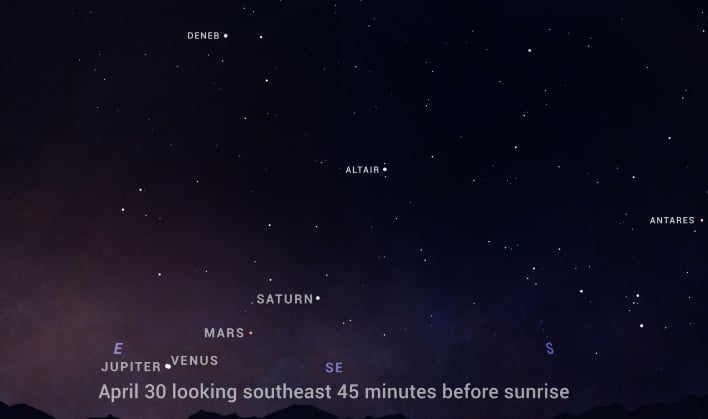Celestial Bodies Are Aligning With The Moon For A Stunning Display, Here's How To Watch

It isn't often that the alignment of so many planets is viewable without the aid of a telescope or pair of binoculars. It tends to only occur every few years, due to the varied orbital timelines that bring them closer to one another at varying intervals. So, if you hope to catch a line-up of these planets, you may want to take advantage of the upcoming show.
The four planets have been making their journey closer to one another all month. Jupiter joined the line-up around mid-April, accompanying Venus, Mars, and Saturn. Early on the morning of April 23rd, the our moon will make an appearance along with the four planets, appearing to the right and above Saturn.
Michelle Nichols, Director of Public Observing at Chicago's Adler Planetarium, told Live Science in an interview, "We don't always get this opportunity. Sometimes, it's one or two in the sky; a lot of times, it's none."
Venus will appear brightest in the early morning sky, with the brightness of each of the other three diminishing along with their respective distance from Earth. If you happen to have a telescope handy, you can peep a little more detail of the four planets. You may be able to spot Saturn's rings, along with a few of Jupiter's moons. If you have a telescope that is powerful enough, you might even be able to view a bit of texture on Mars.
If four planets aligning is not enough for you, then wait until later this summer when five planets will align alongside the moon. Astronomers are saying that late June and early July will be the best opportunity to catch a glimpse of this uncommon arrangement. According to Nichols, alignments that include five planets don't happen often. The last occurrence was in 2020, with the two previous times being in 2016 and 2005.
Top Image Courtesy: NASA/JPL

